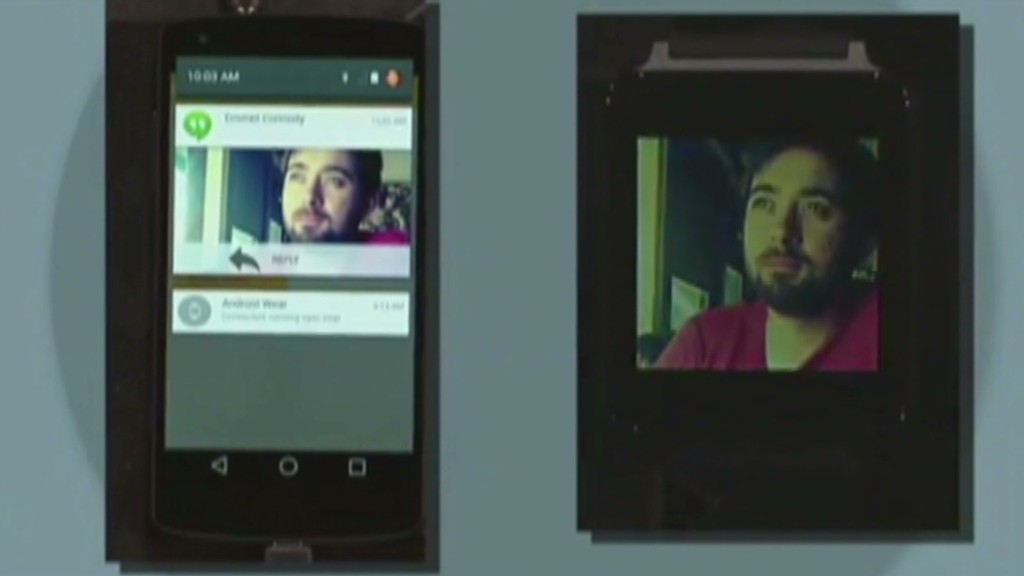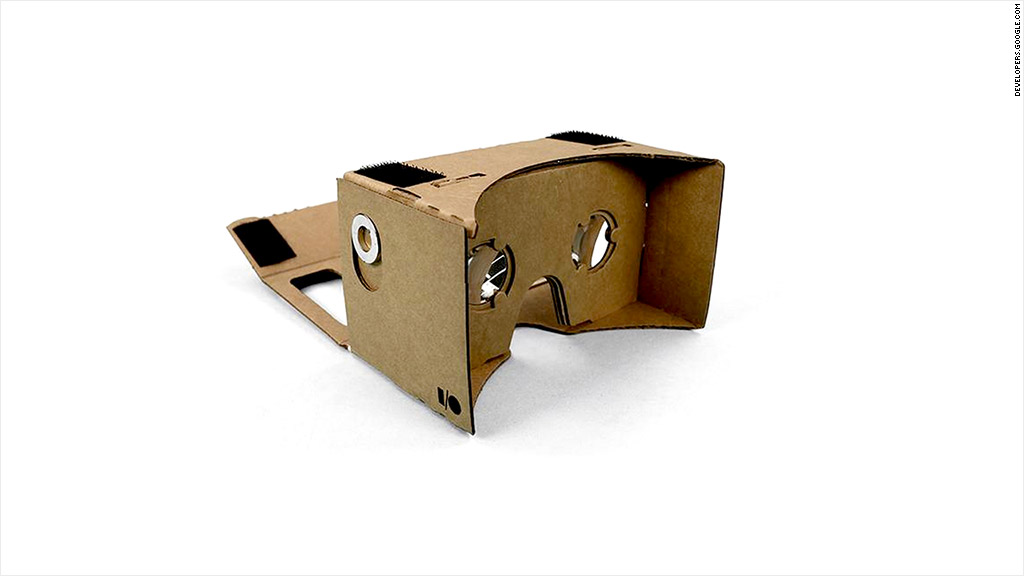
Facebook paid $2 billion to get into the virtual reality business. Google managed it with a couple magnets and some cardboard.
Google (GOOGL) revealed a number of big updates to its Android software at its annual developer conference on Wednesday, but the project that generated the most smiles among those in attendance was a set of cardboard goggles that work with Android phones to create a basic virtual reality experience.
Virtual reality has been a hot topic in the tech world in recent months since Facebook paid $2 billion to acquire VR firm Oculus. The "Cardboard" project, Google says, grew out of a desire "to make VR accessible to more people."
All those in attendance Wednesday received a set of the Cardboard goggles, which were designed by a pair of Googlers in Paris in their "20% time," the company's term for the time it allots employees to work on their own projects.
The contraption folds into place to create a viewfinder and a slot to insert a smartphone. Fire up the Cardboard Android app and you're ready for action.

The goggles stay together thanks to a few velcro straps, while the phone is secured with a rubber band. A pair of lenses are mounted within the cardboard to make the field of view more immersive.
Once you've got Cardboard up and running, you navigate through the app using a magnet slider on the side that gets picked up by the phone's magnetometer. You can watch videos on YouTube, float through space via Google Earth and do some virtual traveling with Google Street View.
Related: Google touts Android TV, smartwatches and cars
Google is opening up the software to developers, so more functions could soon be on the way. Turning your head up and down and left to right changes your view, while taking the device off your face and rotating it 90 degrees takes you back to the home screen.
Google says the device works with most "modern" Android phones, but cautions that it's still in the development stage. It's sharing the Cardboard toolkit with developers to give them "the chance to experiment with it as we do."
In the meantime, Google has also put the design files online so you can try your hand at building your own. If you're using a pizza box, the company advises that you make it an extra large.

